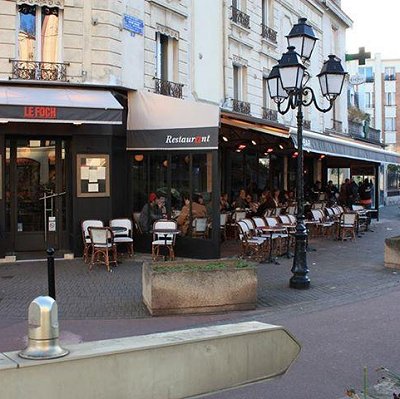
Like us on Facebook
PLACE NAMES


 
|
|
Saint-Maur-des-Fossés
|

|
|
Saint-Maur-des-Fossés owes its name to an abbey founded in 638 by Queen Nanthild, regent for her son Clovis II, at a place called Fossati in Medieval Latin, Les Fossés in modern French, meaning "the moats". This place, located at the narrow entrance of a loop where the Marne River made its way round a rocky outcrop, was probably named after the moats of an ancient Celtic oppidum and later a Roman castrum; the site was known in medieval documents as Castrum Bagaudarum, at a time when the marauding Bagaudae had developed a legendary reputation as defenders of Christians again Roman persecution. Massive foundations, sited so far from a Roman frontier, were attributed by C. Jullian to a temple or a villa instead. In Merovingian times, Gallo-Roman villas in the royal fisc were repeatedly donated as sites for monasteries under royal patronage.
The abbey, dedicated to Saint Peter, Saint Paul and the Virgin Mary, was called Sanctus Petrus Fossatensis in Medieval Latin (Saint Pierre des Fossés in French), meaning "Saint Peter of the Moats". In 868, King Charles the Bald invited the monks of the Abbey of Saint-Maur de Glanfeuil (in Le Thoureil, Maine-et-Loire, western France), who had fled their abbey due to Viking invasion, to relocate to Saint Pierre des Fossés with their precious relics of Saint Maurus.
Later in the Middle Ages, the relics of Saint Maurus became very famous as they were supposed to heal gout and epilepsy, and Saint Pierre des Fossés became one of the most famous pilgrimage centers of medieval France. The rededication to Saint Maurus, in which abbey was renamed Saint-Maur-des-Fossés ("Saint Maurus of the Moats"), was justified by the story that during a drought in 1137, prayers to the Virgin and Saints Peter and Paul having been ineffective, prayer to Saint Maur brought the needed rainfall.
The abbey was secularised in 1535, and in 1541, for Cardinal Jean du Bellay, bishop of Paris, the architect Philibert Delorme designed a château on the site, on four ranges of building around a square central court. Catherine de Medici was a frequent visitor, preferring it to the château de Vincennes; in 1563 she acquired this "château du Bellay", and substantially rebuilt it. On September 23, 1568, her teenage son, King Charles IX, issued the Edict of Saint-Maur, which prohibited all religions but Catholicism. It prompted fierce religious intolerance in Paris and eventually led to the 1572, St. Bartholomew's Day massacre. Building projects at the site were only interrupted by Catherine's death (1589); the château was sold to the Condé family and was eventually completed, and furnished with extensive parterres, at the end of the seventeenth century.
The Château de Saint-Maur, still in the possession of the Condé family, was nationalised during the French Revolution, emptied of its contents, and its terrains divided up among real-estate speculators. The structure was demolished for the value of its materials; virtually nothing remains.
 Feel free to Email me any additions or corrections Feel free to Email me any additions or corrections
LINKS AVAILABLE TO YOUR SITE
| | |





